My
List |
Addition Date
|
Target
|
Mission
|
Instrument
|
Size
|

|
2012-05-23 |
|
Spitzer Space Telescope
|
|
2299x2299x3 |

|
-
PIA15630:
-
Pinwheel Galaxy Rainbow
Full Resolution:
TIFF
(15.87 MB)
JPEG
(422.2 kB)
|

|
2012-05-08 |
|
Spitzer Space Telescope
|
|
3600x2100x3 |

|
-
PIA15624:
-
Measuring Brightness of Super Earth 55 Cancri e
Full Resolution:
TIFF
(22.68 MB)
JPEG
(708.5 kB)
|

|
2012-05-08 |
|
Spitzer Space Telescope
|
|
1916x1076x3 |
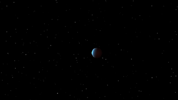
|
-
PIA15623:
-
Super Earth Reveals Itself to Spitzer (Artist Animation)

Full Resolution:
TIFF
(6.194 MB)
JPEG
(42.26 kB)
|

|
2012-05-08 |
|
Spitzer Space Telescope
|
|
3000x2400x3 |

|
-
PIA15622:
-
First-of-Its-Kind Glimpse at a Super Earth (Artist Animation)
Full Resolution:
TIFF
(21.6 MB)
JPEG
(164 kB)
|

|
2012-05-08 |
|
Spitzer Space Telescope
|
IRAC
|
3000x2400x3 |
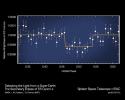
|
-
PIA15621:
-
Magician of a Planet Disappears to Reveal Itself
Full Resolution:
TIFF
(21.6 MB)
JPEG
(332.6 kB)
|

|
2012-04-24 |
|
Spitzer Space Telescope
|
IRAC
|
1970x2400x3 |

|
-
PIA15426:
-
The Sombrero Galaxy's Split Personality
Full Resolution:
TIFF
(14.2 MB)
JPEG
(437.7 kB)
|

|
2012-04-24 |
|
Spitzer Space Telescope
|
IRAC
|
1970x2400x3 |

|
-
PIA15427:
-
Sombrero Galaxy Not So Flat After All
Full Resolution:
TIFF
(14.2 MB)
JPEG
(339.1 kB)
|

|
2012-04-17 |
|
Chandra X-ray Observatory
Hubble Space Telescope
Spitzer Space Telescope
|
|
3600x2880x3 |
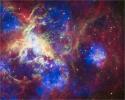
|
-
PIA14415:
-
A New View of the Tarantula Nebula
Full Resolution:
TIFF
(31.1 MB)
JPEG
(1.774 MB)
|

|
2012-04-03 |
|
Galaxy Evolution Explorer (GALEX)
Spitzer Space Telescope
|
IRAC
Ultraviolet/Visible Camera
|
1130x1130x3 |
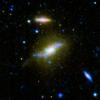
|
-
PIA15419:
-
The Beginning of the End of Star Formation
Full Resolution:
TIFF
(3.835 MB)
JPEG
(129 kB)
|

|
2012-03-08 |
|
Spitzer Space Telescope
|
IRAC
|
3000x2400x3 |
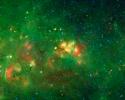
|
-
PIA15413:
-
An Audience Favorite Nebula
Full Resolution:
TIFF
(21.6 MB)
JPEG
(964.2 kB)
|

|
2012-03-08 |
|
Spitzer Space Telescope
|
GLIMPSE
MIPSGAL
|
2799x1926x3 |
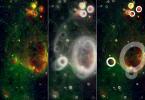
|
-
PIA15412:
-
Finding Bubbles in the Milky Way
Full Resolution:
TIFF
(16.17 MB)
JPEG
(546.9 kB)
|

|
2012-02-29 |
|
Herschel Space Observatory
Spitzer Space Telescope
|
Herschel Telescope
IRAC
|
2800x2880x3 |

|
-
PIA13959:
-
Orion's Rainbow of Infrared Light
Full Resolution:
TIFF
(24.19 MB)
JPEG
(321.2 kB)
|

|
2012-02-22 |
|
Spitzer Space Telescope
|
|
4268x2400x3 |
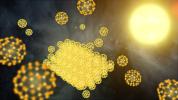
|
-
PIA15266:
-
Building a Buckyball Particle in Space (Artist Concept)
Full Resolution:
TIFF
(30.73 MB)
JPEG
(699.1 kB)
|

|
2012-01-10 |
|
Herschel Space Observatory
Spitzer Space Telescope
|
IRAC
SPIRE
PACS
|
10000x5000x3 |
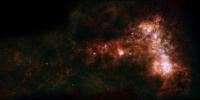
|
-
PIA15255:
-
A Dwarf Galaxy's Star Bar and Dusty Wing
Full Resolution:
TIFF
(150 MB)
JPEG
(6.56 MB)
|

|
2012-01-10 |
|
Herschel Space Observatory
Spitzer Space Telescope
|
IRAC
SPIRE
PACS
|
15500x15500x3 |
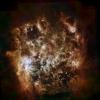
|
-
PIA15254:
-
Dusty Space Cloud
Full Resolution:
TIFF
(720.8 MB)
JPEG
(22.21 MB)
|

|
2012-01-10 |
|
Spitzer Space Telescope
|
IRAC
|
12795x12825x3 |
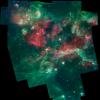
|
-
PIA15253:
-
Stars Brewing in Cygnus X
Full Resolution:
TIFF
(492.3 MB)
JPEG
(14.61 MB)
|

|
2011-12-21 |
|
Hubble Space Telescope
Spitzer Space Telescope
|
Hubble Space Telescope
Spizter Space Telescope
|
1200x998x3 |
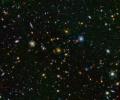
|
-
PIA15251:
-
Distant Galaxy Bursts with Stars
Full Resolution:
TIFF
(3.597 MB)
JPEG
(146.2 kB)
|

|
2011-12-12 |
|
Spitzer Space Telescope
|
|
7600x5500x3 |

|
-
PIA14885:
-
Dragonfish Coming At You in Infrared
Full Resolution:
TIFF
(125.4 MB)
JPEG
(8.273 MB)
|

|
2011-11-16 |
|
Chandra X-ray Observatory
Spitzer Space Telescope
|
Chandra X-ray Telescope
IRAC
|
3600x3069x3 |
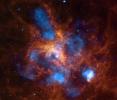
|
-
PIA15079:
-
30 Doradus: The Growing Tarantula Within
Full Resolution:
TIFF
(33.15 MB)
JPEG
(457 kB)
|

|
2011-10-24 |
|
Chandra X-ray Observatory
Spitzer Space Telescope
Wide-field Infrared Survey Explorer (WISE)
|
Chandra X-ray Telescope
IRAC
WISE Telescope
XMM-Newton X-ray
|
2811x2154x3 |
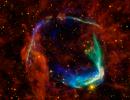
|
-
PIA14872:
-
All Eyes on Oldest Recorded Supernova
Full Resolution:
TIFF
(18.16 MB)
JPEG
(361.1 kB)
|

|
2011-10-24 |
|
Spitzer Space Telescope
Wide-field Infrared Survey Explorer (WISE)
|
IRAC
WISE Telescope
|
2811x2154x3 |
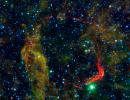
|
-
PIA14871:
-
All That Remains of Exploded Star
Full Resolution:
TIFF
(18.16 MB)
JPEG
(660.9 kB)
|

|
2011-10-19 |
|
Spitzer Space Telescope
|
|
4267x2400x3 |
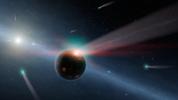
|
-
PIA14739:
-
It's Raining Comets (Artist's Concept)
Full Resolution:
TIFF
(30.72 MB)
JPEG
(328.2 kB)
|

|
2011-09-28 |
NGC 281
|
Chandra X-ray Observatory
Spitzer Space Telescope
|
Chandra X-ray Telescope
IRAC
|
3600x2719x3 |
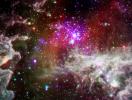
|
-
PIA14731:
-
The 'Pacman Nebula'
Full Resolution:
TIFF
(29.37 MB)
JPEG
(797.6 kB)
|

|
2011-09-16 |
|
Spitzer Space Telescope
|
IRAC
|
1757x1417x3 |
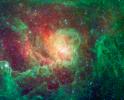
|
-
PIA14728:
-
Into the Depths of the Lagoon Nebula
Full Resolution:
TIFF
(7.481 MB)
JPEG
(449.4 kB)
|

|
2011-08-10 |
Helix Nebula
|
Spitzer Space Telescope
|
IRAC
|
2800x1400x3 |

|
-
PIA14417:
-
Weighing in on the Dumbbell Nebula
Full Resolution:
TIFF
(11.76 MB)
JPEG
(495.8 kB)
|

|
2011-08-01 |
|
Herschel Space Observatory
Spitzer Space Telescope
|
HIFI
IRAC
|
3000x2400x3 |
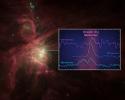
|
-
PIA14407:
-
Oxygen in Orion
Full Resolution:
TIFF
(21.6 MB)
JPEG
(308.4 kB)
|

|
2011-08-01 |
|
Herschel Space Observatory
Spitzer Space Telescope
|
HIFI
IRAC
|
3000x2400x3 |
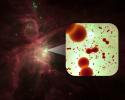
|
-
PIA14406:
-
Oxygen No Longer Lost in Space
Full Resolution:
TIFF
(21.6 MB)
JPEG
(276.5 kB)
|

|
2011-07-20 |
IC 342
|
Spitzer Space Telescope
|
IRAC
MIPS
|
2500x2100x3 |
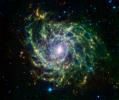
|
-
PIA14402:
-
A Twisted Star-Forming Web in the Galaxy IC 342
Full Resolution:
TIFF
(15.77 MB)
JPEG
(495.4 kB)
|

|
2011-07-20 |
IC 342
|
Spitzer Space Telescope
|
IRAC
|
2500x2100x3 |
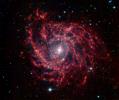
|
-
PIA14401:
-
Spider Web of Stars in IC 342A
Full Resolution:
TIFF
(15.77 MB)
JPEG
(490.6 kB)
|

|
2011-06-30 |
|
Spitzer Space Telescope
|
|
3500x2700x3 |
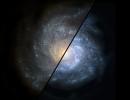
|
-
PIA14107:
-
Galaxies Near and Far (Artist's Concept)
Full Resolution:
TIFF
(28.35 MB)
JPEG
(677.8 kB)
|

|
2011-06-30 |
|
Spitzer Space Telescope
|
IRAC
|
3250x2050x3 |
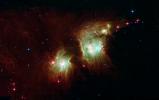
|
-
PIA14106:
-
Making a Spectacle of Star Formation in Orion
Full Resolution:
TIFF
(19.99 MB)
JPEG
(597.6 kB)
|

|
2011-06-15 |
|
Spitzer Space Telescope
|
IRAC
MIPS
|
3600x3600x3 |
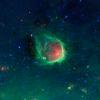
|
-
PIA14104:
-
In the Blackest Night, a Green Ring Nebula
Full Resolution:
TIFF
(38.88 MB)
JPEG
(1.234 MB)
|

|
2011-05-26 |
|
Spitzer Space Telescope
|
IRAC
|
3220x6000x3 |

|
-
PIA14101:
-
Stars Adorn Orion's Sword
Full Resolution:
TIFF
(57.96 MB)
JPEG
(859.1 kB)
|

|
2011-05-26 |
|
Spitzer Space Telescope
|
IRAC
|
1962x3308x3 |

|
-
PIA14099:
-
Finding Forsterite Around a Developing Star (Artist Concept)
Full Resolution:
TIFF
(19.5 MB)
JPEG
(443.8 kB)
|

|
2011-05-26 |
|
Spitzer Space Telescope
|
Infrared Spectrograph (IRS)
|
3000x2400x3 |
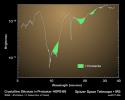
|
-
PIA14100:
-
Cosmic Fountain of Crystal Rain
Full Resolution:
TIFF
(21.6 MB)
JPEG
(297.9 kB)
|

|
2011-05-25 |
|
Galaxy Evolution Explorer (GALEX)
Spitzer Space Telescope
|
IRAC
Ultraviolet/Visible Camera
|
2853x1903x3 |
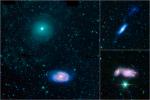
|
-
PIA14097:
-
Galactic Train Wrecks
Full Resolution:
TIFF
(16.29 MB)
JPEG
(537.9 kB)
|

|
2011-04-04 |
|
Spitzer Space Telescope
|
IRAC
|
2048x2048x3 |
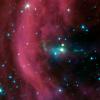
|
-
PIA13930:
-
It's Twins! Spitzer Finds Hidden Jet
Full Resolution:
TIFF
(12.6 MB)
JPEG
(185.4 kB)
|

|
2011-04-04 |
|
Spitzer Space Telescope
|
IRAC
Visible Light
|
2829x1401x3 |

|
-
PIA13929:
-
Undercover Jet Exposed
Full Resolution:
TIFF
(11.89 MB)
JPEG
(182.4 kB)
|

|
2011-03-18 |
|
Spitzer Space Telescope
|
IRAC
MIPS
|
16000x9000x3 |
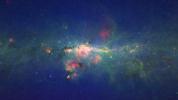
|
-
PIA13932:
-
Stars Gather in 'Downtown' Milky Way
Full Resolution:
TIFF
(432 MB)
JPEG
(24.43 MB)
|

|
2011-03-03 |
|
Spitzer Space Telescope
|
IRAC
MIPS
|
1200x1200x3 |
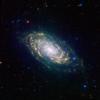
|
-
PIA13901:
-
Sunflower Galaxy Glows with Infrared Light
Full Resolution:
TIFF
(4.325 MB)
JPEG
(126 kB)
|

|
2011-03-03 |
|
Spitzer Space Telescope
|
IRAC
|
1200x1200x3 |

|
-
PIA13900:
-
Spitzer's Sunflower Galaxy
Full Resolution:
TIFF
(4.24 MB)
JPEG
(154.2 kB)
|

|
2011-02-10 |
|
Spitzer Space Telescope
|
IRAC
|
6800x6800x3 |

|
-
PIA13845:
-
North America Nebula in Different Lights
Full Resolution:
TIFF
(138.7 MB)
JPEG
(7.547 MB)
|

|
2011-02-10 |
|
Spitzer Space Telescope
|
IRAC
MIPS
|
6800x6800x3 |
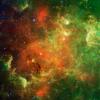
|
-
PIA13844:
-
An Extended Stellar Family
Full Resolution:
TIFF
(138.7 MB)
JPEG
(5.829 MB)
|

|
2011-02-10 |
|
Spitzer Space Telescope
|
IRAC
|
6800x6800x3 |
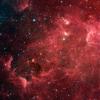
|
-
PIA13843:
-
The Case of the Disappearing Continent
Full Resolution:
TIFF
(138.7 MB)
JPEG
(8.163 MB)
|

|
2011-01-18 |
|
Spitzer Space Telescope
|
IRAC
|
2400x2400x3 |

|
-
PIA13789:
-
The Hidden Galaxy
Full Resolution:
TIFF
(17.3 MB)
JPEG
(356.7 kB)
|

|
2011-01-12 |
|
Spitzer Space Telescope
|
IRAC
|
800x800x3 |
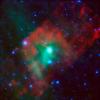
|
-
PIA13781:
-
Standard Candle in the Wind
Full Resolution:
TIFF
(1.922 MB)
JPEG
(52.57 kB)
|

|
2010-12-08 |
|
Spitzer Space Telescope
|
|
3200x2400x3 |
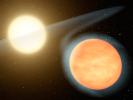
|
-
PIA13691:
-
Hot, Carbon-Rich Planet (Artist Concept)
Full Resolution:
TIFF
(23.04 MB)
JPEG
(276.4 kB)
|

|
2010-12-08 |
|
Spitzer Space Telescope
|
IRAC
|
3144x2306x3 |

|
-
PIA13690:
-
Signature of a Carbon-Rich Planet
Full Resolution:
TIFF
(21.75 MB)
JPEG
(373.5 kB)
|

|
2010-11-24 |
|
Spitzer Space Telescope
|
IRAC
Very Large Array (VLA)
|
3000x2400x3 |
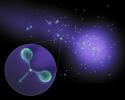
|
-
PIA13638:
-
Bent Galactic Jets
Full Resolution:
TIFF
(21.6 MB)
JPEG
(229.7 kB)
|

|
2010-11-19 |
|
Hubble Space Telescope
Spitzer Space Telescope
|
IRAC
|
1800x1800x3 |

|
-
PIA13632:
-
Shrouded Starburst
Full Resolution:
TIFF
(9.735 MB)
JPEG
(195.5 kB)
|

|
2010-10-27 |
|
Spitzer Space Telescope
|
IRAC
|
3300x2550x3 |
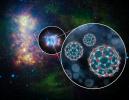
|
-
PIA13551:
-
Extragalactic Space Balls (Artist Concept)
Full Resolution:
TIFF
(25.25 MB)
JPEG
(1.501 MB)
|

|
2010-10-19 |
|
Spitzer Space Telescope
|
|
3000x2073x3 |

|
-
PIA13495:
-
How to Find a Planetary Hot Spot
Full Resolution:
TIFF
(18.66 MB)
JPEG
(325.8 kB)
|

|
2010-10-19 |
|
Spitzer Space Telescope
|
|
1281x720x3 |
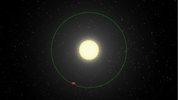
|
-
PIA13494:
-
Weird Warm Spot on Exoplanet

Full Resolution:
TIFF
(2.77 MB)
JPEG
(40.2 kB)
|

|
2010-10-19 |
|
Spitzer Space Telescope
|
|
4096x3072x3 |
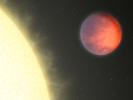
|
-
PIA13493:
-
Planetary Hot Spot Not Under the Glare of Star (Artist Concept)
Full Resolution:
TIFF
(37.75 MB)
JPEG
(375.5 kB)
|

|
2010-10-12 |
|
Spitzer Space Telescope
|
|
3872x2592x3 |
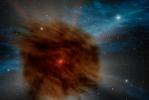
|
-
PIA13478:
-
Giant Star Goes Supernova, Smothered by its own Dust (Artist's Concept)
Full Resolution:
TIFF
(30.11 MB)
JPEG
(702.1 kB)
|

|
2010-09-23 |
|
Spitzer Space Telescope
|
IRAC
|
3771x2184x3 |
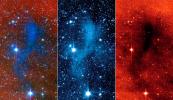
|
-
PIA13409:
-
An Unexpected Scattering of Light
Full Resolution:
TIFF
(24.71 MB)
JPEG
(1.729 MB)
|

|
2010-08-23 |
|
Spitzer Space Telescope
|
IRAC
|
3000x2400x3 |
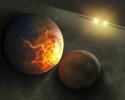
|
-
PIA13347:
-
Before the Smashup (Artist's Concept)
Full Resolution:
TIFF
(21.6 MB)
JPEG
(355.4 kB)
|

|
2010-08-23 |
|
Spitzer Space Telescope
|
IRAC
|
3000x2400x3 |
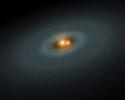
|
-
PIA13346:
-
Circle of Planetary Ashes (Artist's Concept)
Full Resolution:
TIFF
(21.6 MB)
JPEG
(395.3 kB)
|

|
2010-08-18 |
|
Spitzer Space Telescope
|
IRAC
|
2000x2000x3 |
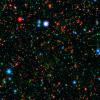
|
-
PIA13335:
-
Ancient Galaxy Cluster Still Producing Stars
Full Resolution:
TIFF
(12.02 MB)
JPEG
(542.9 kB)
|

|
2010-08-05 |
|
Spitzer Space Telescope
|
IRAC
|
3545x3600x3 |

|
-
PIA13316:
-
NASA's Great Observatories Witness a Galactic Spectacle
Full Resolution:
TIFF
(38.29 MB)
JPEG
(755.9 kB)
|

|
2010-07-28 |
|
Spitzer Space Telescope
|
IRAC
|
3000x3000x3 |
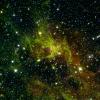
|
-
PIA13304:
-
Awash in Green and Red
Full Resolution:
TIFF
(27 MB)
JPEG
(1.548 MB)
|

|
2010-07-28 |
|
Spitzer Space Telescope
|
IRAC
|
2400x2400x3 |

|
-
PIA13303:
-
Beastly Stars and a Bubble
Full Resolution:
TIFF
(17.3 MB)
JPEG
(871.4 kB)
|

|
2010-07-28 |
|
Spitzer Space Telescope
|
IRAC
|
1800x1800x3 |
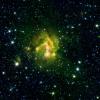
|
-
PIA13302:
-
A Shocking Outflow
Full Resolution:
TIFF
(9.735 MB)
JPEG
(406 kB)
|

|
2010-07-28 |
|
Spitzer Space Telescope
|
IRAC
|
6000x6000x3 |
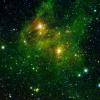
|
-
PIA13301:
-
Bright Lights, Green City
Full Resolution:
TIFF
(108 MB)
JPEG
(6.345 MB)
|

|
2010-07-22 |
|
Spitzer Space Telescope
|
|
1280x717x3 |
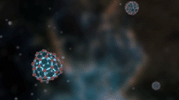
|
-
PIA13290:
-
Buckyballs Jiggle Like Jello (Artist Concept)

Full Resolution:
TIFF
(2.756 MB)
JPEG
(36.54 kB)
|

|
2010-07-22 |
|
Spitzer Space Telescope
|
|
1280x717x3 |

|
-
PIA13289:
-
Mini Soccer Balls in Space

Full Resolution:
TIFF
(2.756 MB)
JPEG
(53.41 kB)
|

|
2010-07-22 |
|
Hubble Space Telescope
Spitzer Space Telescope
|
|
3000x2400x3 |

|
-
PIA13288:
-
Space Balls (Artist's Concept)
Full Resolution:
TIFF
(21.6 MB)
JPEG
(422 kB)
|

|
2010-07-22 |
|
Spitzer Space Telescope
|
|
3000x2400x3 |
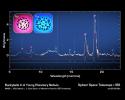
|
-
PIA13287:
-
Jiggling Soccer-Ball Molecules in Space
Full Resolution:
TIFF
(21.6 MB)
JPEG
(390.7 kB)
|

|
2010-07-14 |
|
Spitzer Space Telescope
|
IRAC
|
1881x1849x3 |
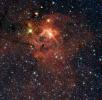
|
-
PIA13276:
-
Massive Young Star and its Cradle
Full Resolution:
TIFF
(10.45 MB)
JPEG
(789 kB)
|

|
2010-07-07 |
|
Spitzer Space Telescope
|
IRAC
MIPS
|
7600x3700x3 |
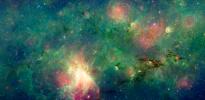
|
-
PIA13241:
-
The Invisible Dragon
Full Resolution:
TIFF
(84.36 MB)
JPEG
(4.221 MB)
|

|
2010-07-07 |
|
Spitzer Space Telescope
|
IRAC
MIPS
|
7600x3700x3 |
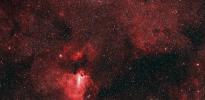
|
-
PIA13240:
-
Dragon's Lair
Full Resolution:
TIFF
(84.36 MB)
JPEG
(6.567 MB)
|

|
2010-06-24 |
|
Spitzer Space Telescope
Wide-field Infrared Survey Explorer (WISE)
|
|
3000x2400x3 |
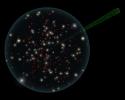
|
-
PIA13217:
-
Coolest Orbs on the Block (Artist's Concept)
Full Resolution:
TIFF
(21.6 MB)
JPEG
(208.9 kB)
|

|
2010-06-24 |
|
Spitzer Space Telescope
|
IRAC
|
556x556x3 |
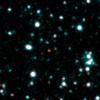
|
-
PIA13216:
-
Cool as a Stellar Cucumber
Full Resolution:
TIFF
(928.8 kB)
JPEG
(24.19 kB)
|

|
2010-06-01 |
|
Spitzer Space Telescope
|
|
3000x2400x3 |
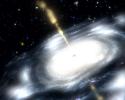
|
-
PIA13168:
-
Backward Black Hole Shoots Powerful Jets (Artist's Concept)
Full Resolution:
TIFF
(21.6 MB)
JPEG
(395.1 kB)
|

|
2010-05-20 |
|
Spitzer Space Telescope
|
IRAC
|
2804x1870x3 |
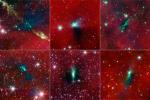
|
-
PIA13149:
-
Blobs House Twin Stars
Full Resolution:
TIFF
(15.73 MB)
JPEG
(558.6 kB)
|

|
2010-05-11 |
|
Spitzer Space Telescope
|
IRAC
|
3300x2400x3 |
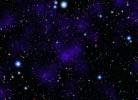
|
-
PIA13134:
-
Galactic Metropolis
Full Resolution:
TIFF
(23.76 MB)
JPEG
(536.5 kB)
|

|
2010-04-21 |
|
Spitzer Space Telescope
|
|
3300x2550x3 |
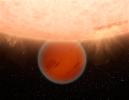
|
-
PIA13054:
-
Exotic Exoplanet (Artist's Concept)
Full Resolution:
TIFF
(25.25 MB)
JPEG
(331.7 kB)
|

|
2010-04-01 |
|
Spitzer Space Telescope
|
IRAC
|
2171x5085x3 |

|
-
PIA13005:
-
Orion's Dreamy Stars
Full Resolution:
TIFF
(33.16 MB)
JPEG
(603 kB)
|

|
2010-03-29 |
|
Chandra X-ray Observatory
Spitzer Space Telescope
|
Chandra X-ray Telescope
IRAC
|
3600x3547x3 |
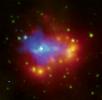
|
-
PIA12982:
-
Dusty Dead Star
Full Resolution:
TIFF
(38.31 MB)
JPEG
(303.8 kB)
|

|
2010-03-17 |
|
Spitzer Space Telescope
|
|
4096x3072x3 |
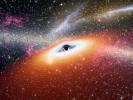
|
-
PIA12966:
-
Prehistoric Black Hole (Artist's Concept)
Full Resolution:
TIFF
(37.75 MB)
JPEG
(1.255 MB)
|

|
2010-03-17 |
|
Spitzer Space Telescope
|
IRAC
IRAS
MIPS
|
2400x3000x3 |

|
-
PIA12965:
-
How to Spot a Primitive Black Hole
Full Resolution:
TIFF
(21.62 MB)
JPEG
(323.5 kB)
|

|
2010-01-05 |
|
Spitzer Space Telescope
|
IRAC
MIPS
|
7801x7021x3 |

|
-
PIA12485:
-
Little Galaxy Explored
Full Resolution:
TIFF
(164.3 MB)
JPEG
(14.03 MB)
|

|
2010-01-05 |
|
Spitzer Space Telescope
|
|
4200x3300x3 |
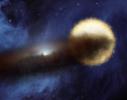
|
-
PIA12484:
-
Mystery of the Fading Star (Artist Concept)
Full Resolution:
TIFF
(41.58 MB)
JPEG
(580.5 kB)
|

|
2009-11-23 |
|
Spitzer Space Telescope
|
IRAC
|
1600x1600x3 |
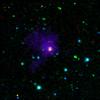
|
-
PIA12377:
-
Twin Brown Dwarfs Wrapped in a Blanket
Full Resolution:
TIFF
(7.693 MB)
JPEG
(141.3 kB)
|

|
2009-11-23 |
|
Spitzer Space Telescope
|
|
3200x2400x3 |

|
-
PIA12376:
-
Dusty Beginnings of a Star
Full Resolution:
TIFF
(23.04 MB)
JPEG
(389.4 kB)
|

|
2009-11-10 |
|
Chandra X-ray Observatory
Hubble Space Telescope
Spitzer Space Telescope
|
IRAC
|
9725x4862x3 |

|
-
PIA12348:
-
Great Observatories' Unique Views of the Milky Way
Full Resolution:
TIFF
(141.8 MB)
JPEG
(3.839 MB)
|

|
2009-11-04 |
HR 8799
|
Spitzer Space Telescope
|
MIPS
|
1100x1100x3 |
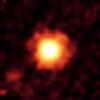
|
-
PIA12336:
-
A Picture of Unsettled Planetary Youth
Full Resolution:
TIFF
(1.213 MB)
JPEG
(40.46 kB)
|

|
2009-10-07 |
|
Hubble Space Telescope
Spitzer Space Telescope
|
IRAC
|
387x727x3 |

|
-
PIA12259:
-
Infrared Ring around Saturn
Full Resolution:
TIFF
(845.1 kB)
JPEG
(50.56 kB)
|

|
2009-10-07 |
|
Spitzer Space Telescope
|
|
1279x719x3 |

|
-
PIA12258:
-
Saturn Family Tour
Full Resolution:
TIFF
(2.762 MB)
JPEG
(65.03 kB)
|

|
2009-10-07 |
|
Spitzer Space Telescope
|
|
3000x2400x3 |

|
-
PIA12257:
-
Saturn's Infrared Ring (Artist Concept)
Full Resolution:
TIFF
(21.6 MB)
JPEG
(245.6 kB)
|

|
2009-10-07 |
|
Spitzer Space Telescope
|
|
3000x2400x3 |
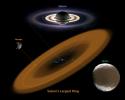
|
-
PIA12256:
-
The King of Rings (Artist Concept)
Full Resolution:
TIFF
(21.6 MB)
JPEG
(268.1 kB)
|

|
2009-09-23 |
|
Spitzer Space Telescope
|
|
3000x2400x3 |
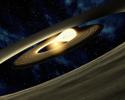
|
-
PIA12210:
-
Lump of Planetary Stuff (Artist Concept)
Full Resolution:
TIFF
(21.6 MB)
JPEG
(490 kB)
|

|
2009-08-12 |
Cepheus B
|
Chandra X-ray Observatory
Spitzer Space Telescope
|
Chandra X-ray Telescope
IRAC
|
2749x3600x3 |

|
-
PIA12169:
-
Trigger-Happy Cloud
Full Resolution:
TIFF
(29.69 MB)
JPEG
(402.1 kB)
|

|
2009-08-10 |
HD 172555
|
Spitzer Space Telescope
|
|
3000x2400x3 |
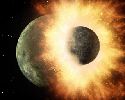
|
-
PIA12166:
-
Planetary Demolition Derby (Artist Concept)

Full Resolution:
TIFF
(21.6 MB)
JPEG
(362.1 kB)
|

|
2009-08-05 |
|
Spitzer Space Telescope
|
IRAC
|
1493x1319x3 |
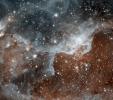
|
-
PIA12164:
-
Spitzer's First Warm Images
Full Resolution:
TIFF
(5.919 MB)
JPEG
(231.7 kB)
|

|
2009-07-23 |
NGC 1097
|
Spitzer Space Telescope
|
IRAC
|
2056x2056x3 |
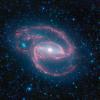
|
-
PIA12151:
-
Coiled Creature of the Night
Full Resolution:
TIFF
(12.7 MB)
JPEG
(467.9 kB)
|

|
2009-06-10 |
Milky Way
|
Spitzer Space Telescope
|
IRAC
|
2934x2052x3 |
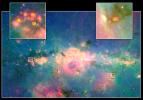
|
-
PIA12074:
-
Baby Stars Finally Found in Jumbled Galactic Center
Full Resolution:
TIFF
(18.06 MB)
JPEG
(805.7 kB)
|

|
2009-05-13 |
|
Spitzer Space Telescope
|
|
3000x2400x3 |
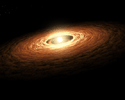
|
-
PIA12008:
-
Silicate Crystal Formation in the Disk of an Erupting Star (Artist Concept)

Full Resolution:
TIFF
(21.6 MB)
JPEG
(276.9 kB)
|

|
2009-04-30 |
Messier 81
|
Spitzer Space Telescope
|
IRAC
|
2336x1144x3 |
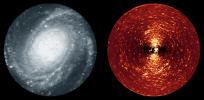
|
-
PIA12073:
-
"Missing Link" Found
Full Resolution:
TIFF
(8.027 MB)
JPEG
(275.4 kB)
|

|
2009-04-30 |
|
Spitzer Space Telescope
|
IRAC
|
1750x940x3 |
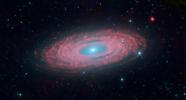
|
-
PIA12001:
-
Why Are Galaxies So Smooth?
Full Resolution:
TIFF
(4.943 MB)
JPEG
(117.7 kB)
|

 Planetary Data System
Planetary Data System




















































































































